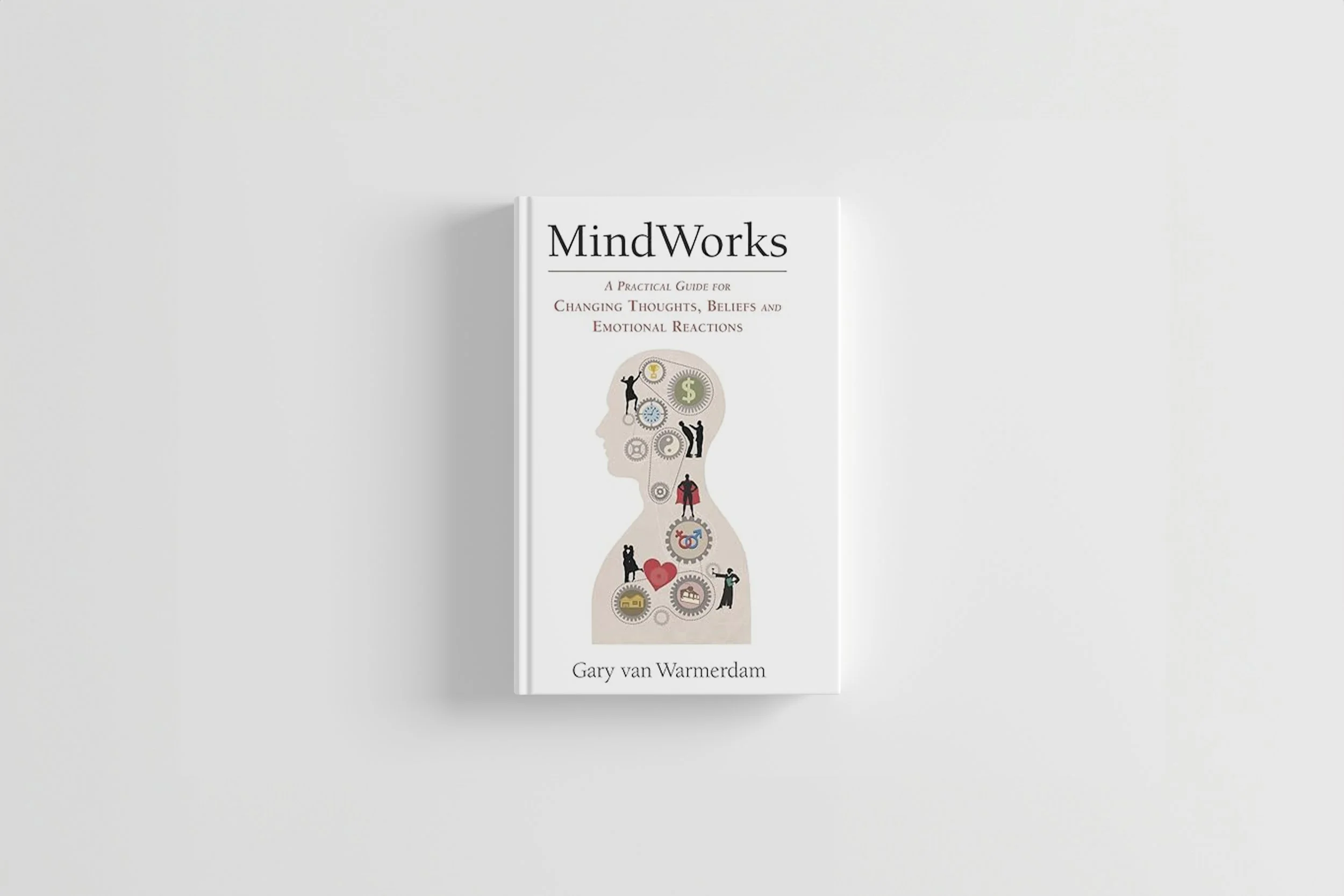MindWorks: Changing Thoughts, Beliefs, and Emotional Reactions by Gary van Warmerdam
MindWorks: Changing Thoughts, Beliefs, and Emotional Reactions by Gary van Warmerdam.
The basic principles of changing thoughts and limiting beliefs.
Do you ever wonder why we generate thoughts and emotional reactions that drive us to sabotage behaviors and emotional drama? Do you want to free yourself from the footprint left behind by trauma? Or have you had enough of being stuck in old and limiting beliefs falsely holding you back?
If you want to take your life to the next level by learning the basic principles of how our minds work, this book is for you. MindWorks is the best book I've personally read for years, and just sharing this information gives me goosebumps. If you have experienced being stuck for ages and suddenly discovering the answer, you can relate to the feeling.
If you've ever suffered from trauma or want to reduce the impact of your PTSD, then I would strongly recommend reading it.
What is MindWorks about?
Essentially, MindWorks teaches you the principles behind making life-altering changes. By understanding and shifting our points of view, beliefs, and language, we can end so much of our suffering in ourselves and our relationships. The key is understanding the complexities of our mind's inner workings and taking a step-by-step approach to executing the knowledge.
The path to sustainable happiness is to free ourselves from automatic thought patterns and emotional reactions created by our minds running on autopilot.
Our beliefs affect our emotions.
External circumstances aren't the primal source of our emotions. Essentially, our happiness is a product of factors in our minds. Internal factors include negative thoughts, opinions, criticism, self-judgment & beliefs. And our inner world significantly affects our emotions and how we feel.
Ultimately, the key to happiness is to learn how to address those root causes.
Our belief system determines the meaning of an event, influencing our emotional experience. Through practice and awareness, we can learn to master our emotions. Changing our limiting beliefs can help us change how we feel about events that have happened in the past and the present.
Change is more than an intellectual process.
When we want to implement change, the new paradigm we try to adapt often conflicts with our current belief system. Don't be discouraged; it is entirely normal for all of us. However, being crystal clear and adjusting our expectations is highly beneficial. Limiting beliefs and old thought patterns have, on most occasions, been repeatedly reinforced throughout our lives. We must understand it takes real work to adopt new behaviors or emotional states contradicting our automated responses.
Emotional change is about retraining our minds' conditioning and automated responses. Developing awareness enables us to choose what thoughts and images our minds project on us, which is a crucial component in changing our emotional reactions.
Understanding limiting beliefs.
Learning to distinguish between beliefs and facts is the key to understanding limiting beliefs. By learning how to change our limiting beliefs, we ultimately learn how to impact how we feel. Stepping out of our belief bubbles is the first step in this process, as they distort our perception of reality and cause us to accept our false mental projections as reality. Beliefs provide a mental model of how we see the world and why things are the way they are—seen through our lens.
Beliefs must be perceived as abstract ideas separate from the world. Bursting a belief bubble is an emotional experience we are conditioned to avoid. Again, this is entirely normal - so don't get discouraged if you experience any resistance.
Quoting the author, "When the illusions of our beliefs are identified for what they are, they tend to fall apart, along with the fear and unhappiness attached to them." The tricky thing about working on our limiting beliefs is that it's way easier to identify someone else operating from within a belief bubble. However, the best way to gain this knowledge is to focus on our inner work.
Learn more.
As you continue reading this book, you will learn about our ego characters, their mechanics, and practical examples of approaching them. I like to think of working on our authentic selves as a journey. When we start to master the journey, our emotional experience of life no longer comes from a conditioned belief system.
Give yourself time and learn to embrace the journey. Change takes time and is difficult for everyone. An authentic self is happy and experiences inner peace. We no longer need to be defined or label ourselves. Being is enough.
When we disassemble our egos, we take back control of our lives. We can appreciate the moment for what it is and see others for who they truly are.
Best of luck in the process. I found this knowledge mindblowing.

